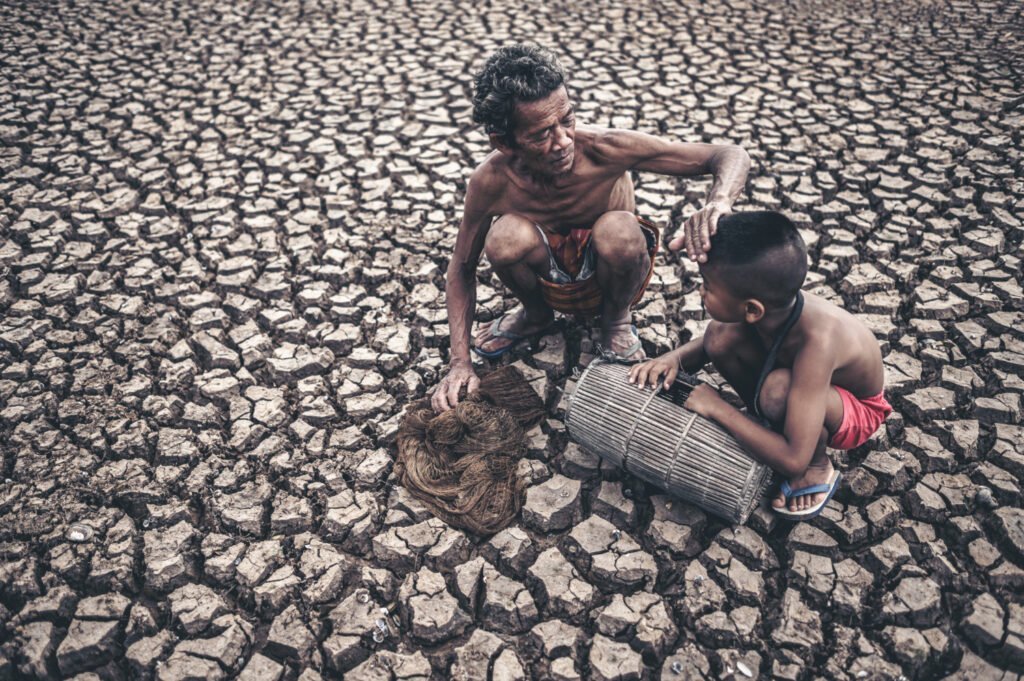
Access to clean and safe drinking water is a fundamental human right, yet for millions of people living in rural areas of India, it remains a distant dream. The challenges are multifaceted, ranging from inadequate rainfall and over-exploitation of groundwater to poor water management practices and erratic monsoon patterns. As a result, villages across the country are facing acute shortages, jeopardizing the health and well-being of their residents.
One of the primary reasons behind the water crisis in rural India is the heavy dependence on groundwater for daily needs, including drinking water, irrigation, and domestic uses. However, rampant over-extraction and insufficient recharge have led to a rapid decline in the water table, exacerbating the scarcity. Furthermore, unpredictable monsoon seasons have worsened the situation, leaving many areas parched and devoid of essential moisture needed to replenish groundwater sources.
In addition to natural factors, poor water management practices such as inefficient irrigation methods, untreated sewage discharge, and industrial pollution contribute significantly to the crisis. These issues underscore the urgent need for comprehensive interventions to address the root causes of water scarcity and ensure sustainable access to clean and mineral-rich drinking water for rural communities.
Recognizing the gravity of the situation, the government of India has launched several initiatives aimed at improving access to clean drinking water in rural areas. The National Rural Drinking Water Programme (NRDWP), initiated in 2009, focuses on enhancing water quality, accessibility, and community participation in water management. Similarly, the Jal Jeevan Mission, launched in 2019, aims to provide piped water supply to every rural household by 2024 while promoting sustainability, water conservation, and awareness about clean water.
Furthermore, the Swachh Bharat Abhiyan, launched in 2014, complements these efforts by targeting universal sanitation coverage and hygiene promotion, including initiatives to provide safe drinking water alongside improved waste management and toilet facilities. Rainwater harvesting, promoted by NGOs and community organizations, offers a sustainable solution to water scarcity by collecting rainwater and recharging groundwater.
Moreover, community water filtration systems employing advanced technologies like reverse osmosis and ultraviolet radiation are being installed in areas with poor water quality, ensuring access to clean and mineral-rich water for rural residents. These initiatives, combined with awareness campaigns promoting water conservation practices such as rainwater harvesting, drip irrigation, and crop rotation, are pivotal in fostering a culture of responsible water usage and management.
Despite these commendable efforts, more work remains to be done to ensure universal access to safe and mineral-rich drinking water in rural India. Collaboration between the government, NGOs, and private sectors is essential for implementing sustainable water management practices and educating the public about the importance of water conservation. Only through collective action and unwavering commitment can we realize the vision of ensuring pure and mineral drinking water for every rural community in India.
By addressing the root causes of water scarcity and promoting sustainable water management practices, we can safeguard the health and well-being of millions of people and pave the way for a brighter and more prosperous future for rural India. Together, let us strive towards ensuring access to clean and mineral-rich drinking water for all, leaving no one behind in our journey towards a healthier and more sustainable world.

